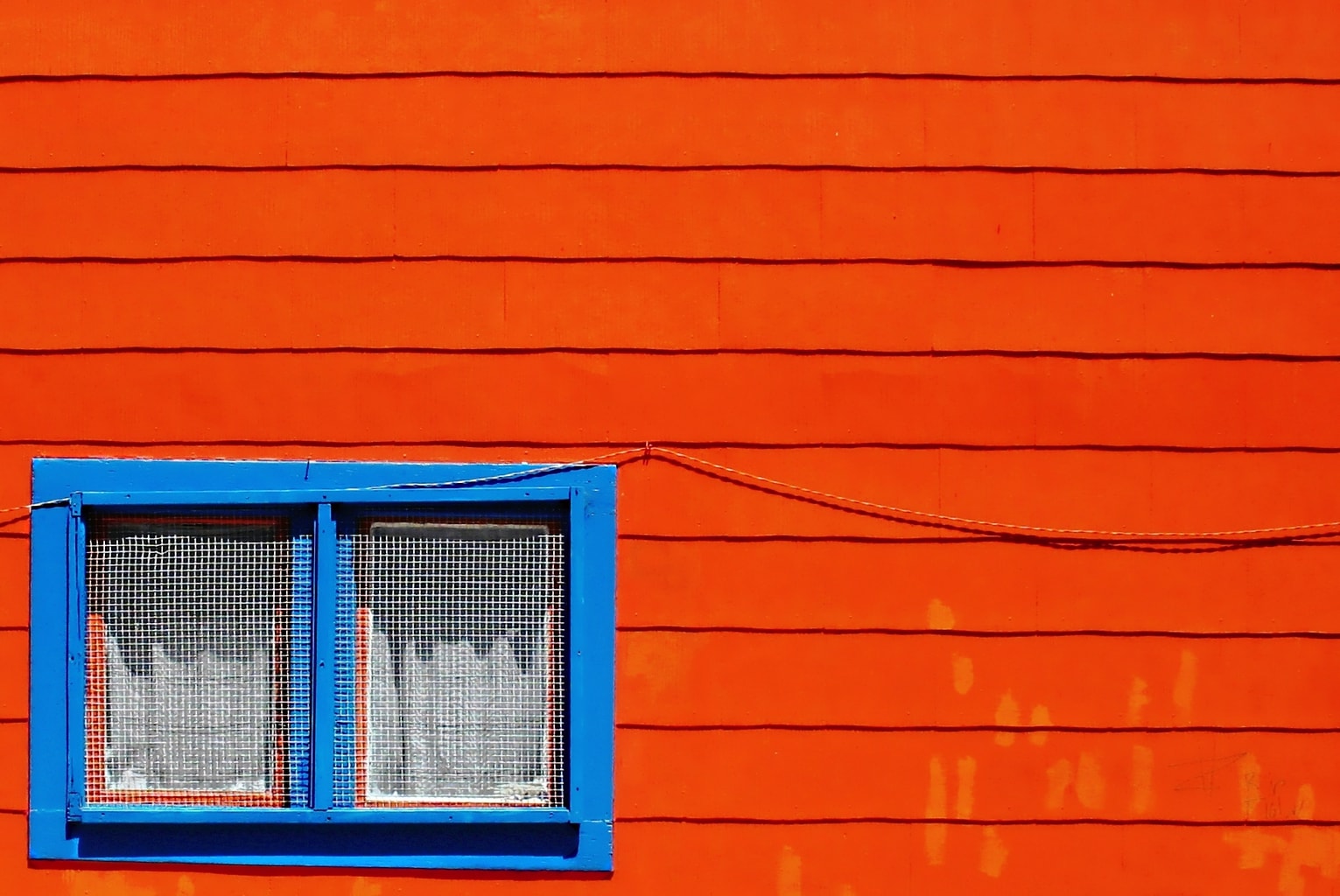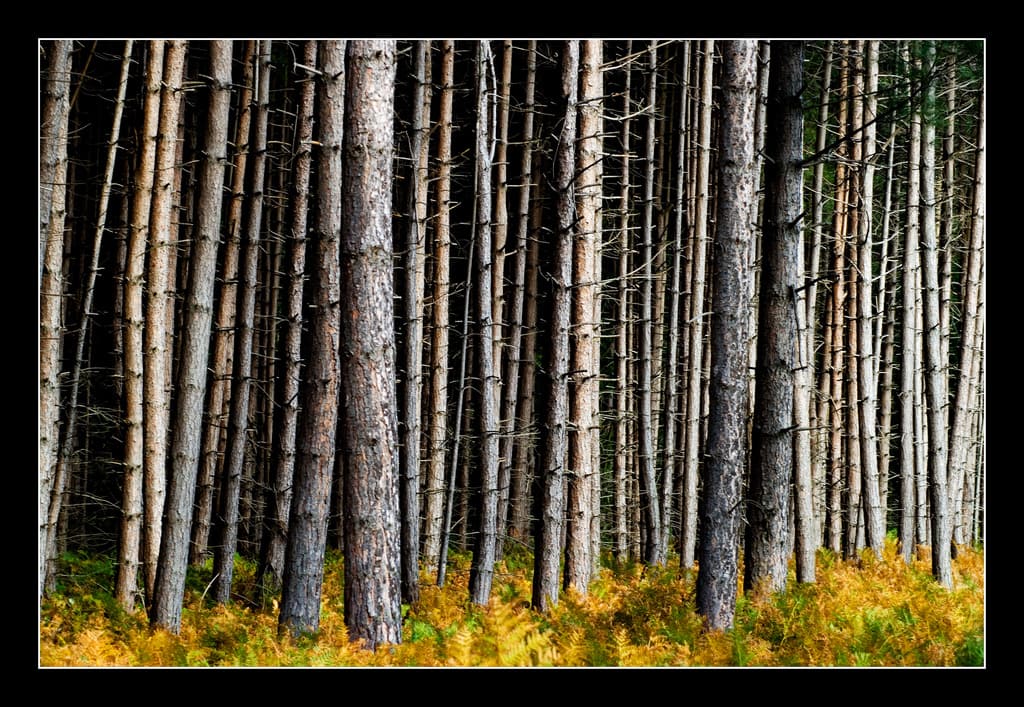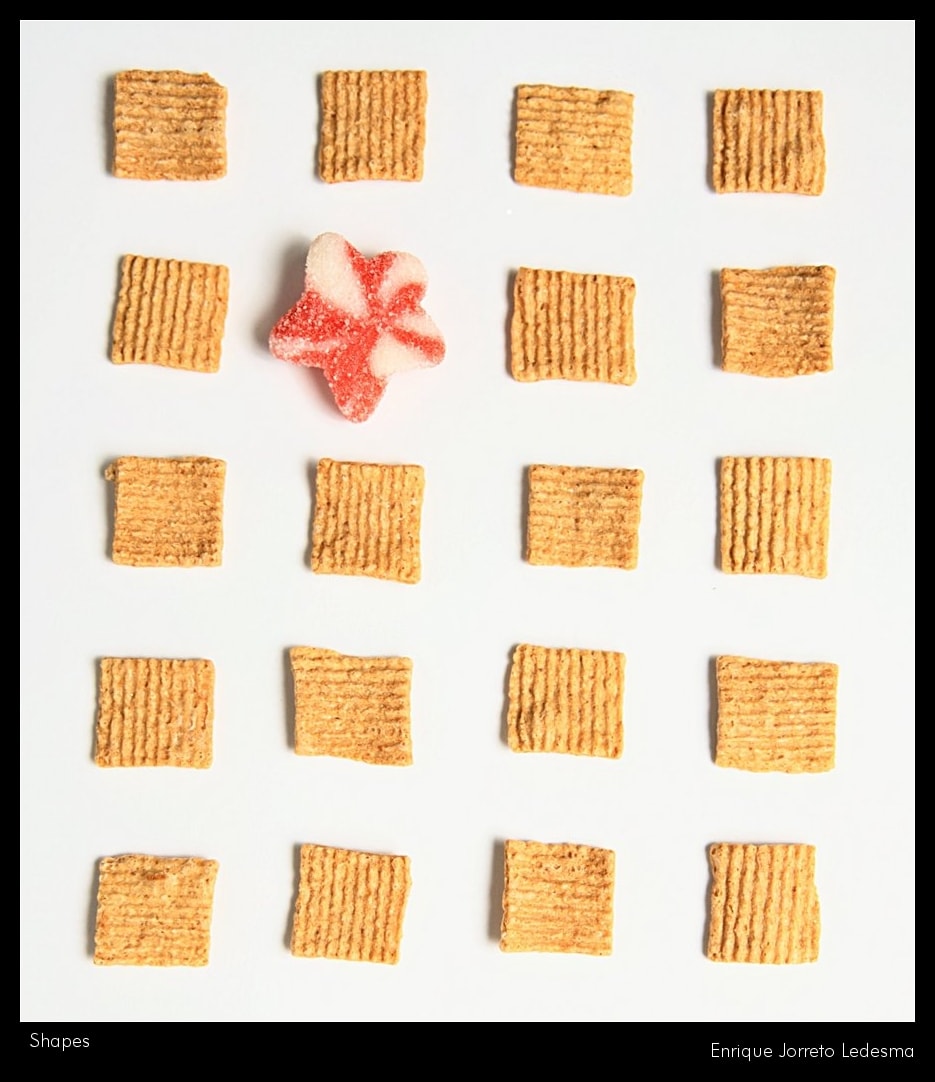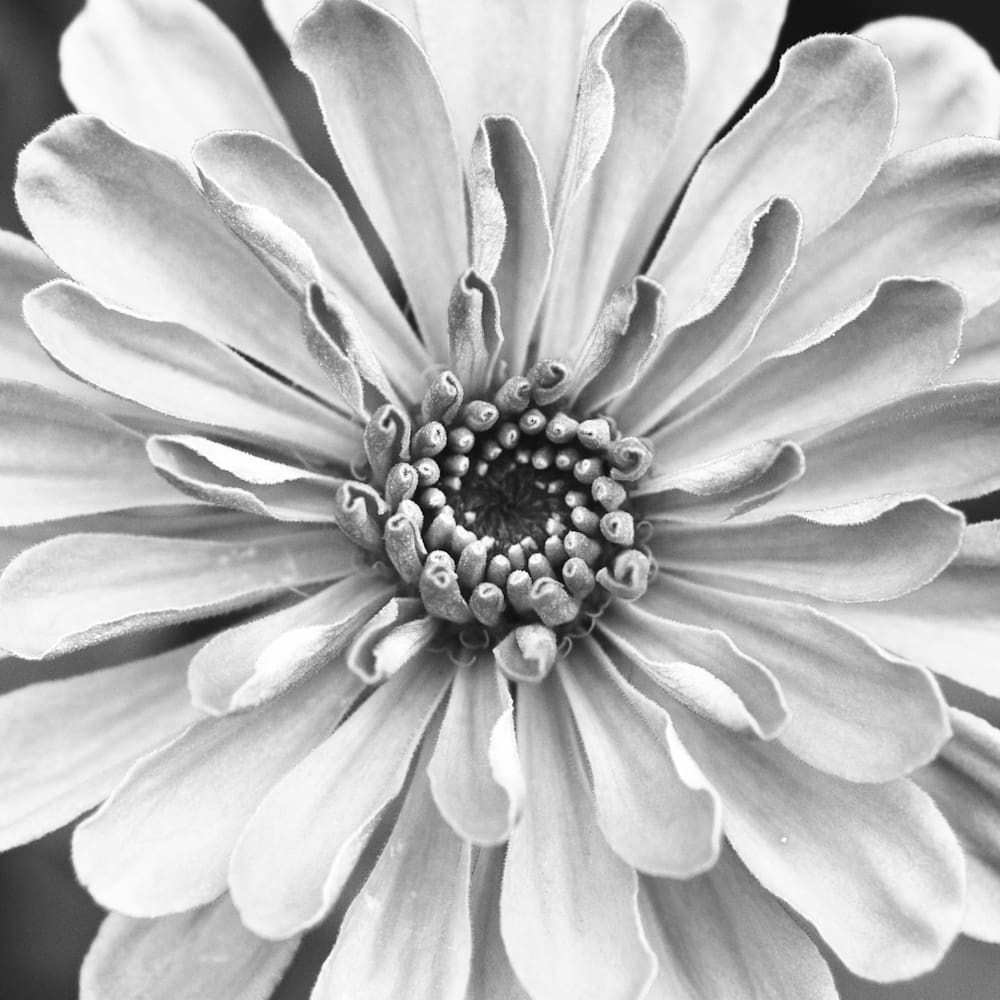When you photograph you are continually using contrast, through colours, light, shapes or textures. Because contrast is nothing more than highlighting one element by comparison to another. Every time you do it, whether you are aware of it or not, you are including contrast in your images.
WHAT IS THE CONTRAST FOR?
Surely you have already heard about the importance of choosing a center of interest in your photographs so that they are not flat or boring, right? And the importance of, once you have chosen it, guide the viewer through the composition to it. The human eye naturally tends to focus on what stands out in an image. Of a bunch of blue balls, in which there is only one yellow, the yellow one will stand out in contrast to the rest and therefore our gaze will automatically go there.
Thus, we can consider contrast as one more compositional tool and for this reason it is important that you learn to master it and consciously add it to your images. We see how? ?
LEARN TO IDENTIFY TYPES OF CONTRAST
To start using something, you first have to know a little about the possibilities it offers you and, above all, where you can find it. Luckily, you have contrast in everything, the most important thing is that you are the one who uses it and that it does not end up in your image just by chance. If you are aware of contrast, you will be able to take advantage of other compositional elements to complement each other on the way to highlighting the center of interest.
CONTRAST BY COLOR
Before we have presented contrast as the quality of highlighting one element in comparison to another. In color this is equivalent to knowing and playing with complementary colors and the harmony of tones, to achieve greater or lesser contrast.
The maximum expression of contrast by color occurs between complementary colors , which are those that are opposite in the tonal circle.
On the contrary, if you move within a tone and its most immediate nuances (variations with respect to the same tone) the contrast will be low.

- Negative space: You can use negative space while using color contrast techniques to highlight your main focus.

CONTRAST BY SCALE (SIZE)
If we want to highlight a tiny newborn foot, what do we do with it? Exactly, compare it to something much bigger. Look at the following image of the little foot in the hands of an adult. The same image without the size contrast would not allow us to get an idea of its small size.

CONTRAST FOR SIGNIFICANCE
This type of contrast is nothing more than contrasting opposite or very different situations . For example, a static element next to another in movement, the old and the new, wealth and poverty, etc. This type of contrast will allow you to add a lot of meaning to your images, even far beyond the purely visual contrast.
CONTRAST BY BRIGHTNESS
Another very interesting way to add contrast to an image is through the play of light . A point lit object stands out much more than a homogeneous lighting image where everything has the same amount of light. Playing with this type of image will not only provide visual contrast images, but will often allow you to add deeper meanings associated with light or the absence of it. There are two extreme techniques in the game of light and contrast that you can practice with and they will surely not disappoint you. Surely you already know them, right?
- High key photography: They are those images where light predominates. It is achieved with a white or very light background and lots of light. They are associated with the positive, the joyful or the innocence.
- Low key photography: In these, on the other hand, darkness predominates; the occult, the mystery, and even the evil, although at the same time it is strength and elegance. Here you will need a black or very dark background and low lighting.
You can read about how to get either of the two keys in this article .

CONTRAST BY SHAPES
By now you can foresee the explanation, right? ? Indeed, a contrast by shapes is obtained through two or more opposite or different shapes. For example, a round within a square, a winding road in a river bed next to a straight highway, the peaked tops of some mountains and a flat valley… All this combination of shapes is also considered as contrast.

- Rhythm and breaking the rhythm: Rhythm is the repetition of one or more elements in a more or less patterned way. When that pattern is interrupted by an element that interferes with the course of this visual rhythm, we know it as "breaking the rhythm." This type of image is also an image of contrasting shapes.

CONTRAST BY TEXTURES
When we talk about textures we usually think of tree bark, wool, rocks, or any element with a clearly identifiable texture. However, any element that you can photograph has a texture. This can be smoother, finer or softer, or rougher, but everything has texture. This brings us closer to the image through the memory we have of it, allowing us to feel and imagine the touch of things through the image. That is why we always say that textures are an important element of images, because they allow you to bring the viewer closer to your image and to identify with it through this simple aspect.
CONTRAST IN BLACK AND WHITE
Black and white images are very tolerant of high contrast, which can range from an image consisting simply of pure black and white as an expression of the highest degree of contrast, to the use of other shades of intermediate gray. The further those shades of gray are from pure black or white, the less contrast we will have in the image.
High contrast images are images with greater visual force and drama, while low contrast images are softer images. Depending on the result you want to obtain, you can choose between one or the other. Remember that textures are important, if you dodge or burn you will lose them. Unless you do it with some artistic intention, it is important to expose correctly in order to preserve them.

Contrast is one more way that you have to make whoever admires your image walk through it naturally, to mark the path as you want him to go, as if it were an arrow. Contrast is a tool with infinite possibilities, both formally and in the amount of meaning that you can bring to your different images. So now that we've introduced you to it, take it in as naturally as you have with so many other photographic concepts. I'll tell you something, do you know what is the easiest way to learn concepts? Practice them. If you had to learn to ride a bicycle through user manuals, theories of mass and space or laws of gravity, how many people do you think would ride a bicycle today? ? Photography is like riding a bike,
And you know, if you liked it, it has been useful to you, it has given you an idea for your new photographic creations and/or you think that any of your friends or family, friends, neighbors, etc.


